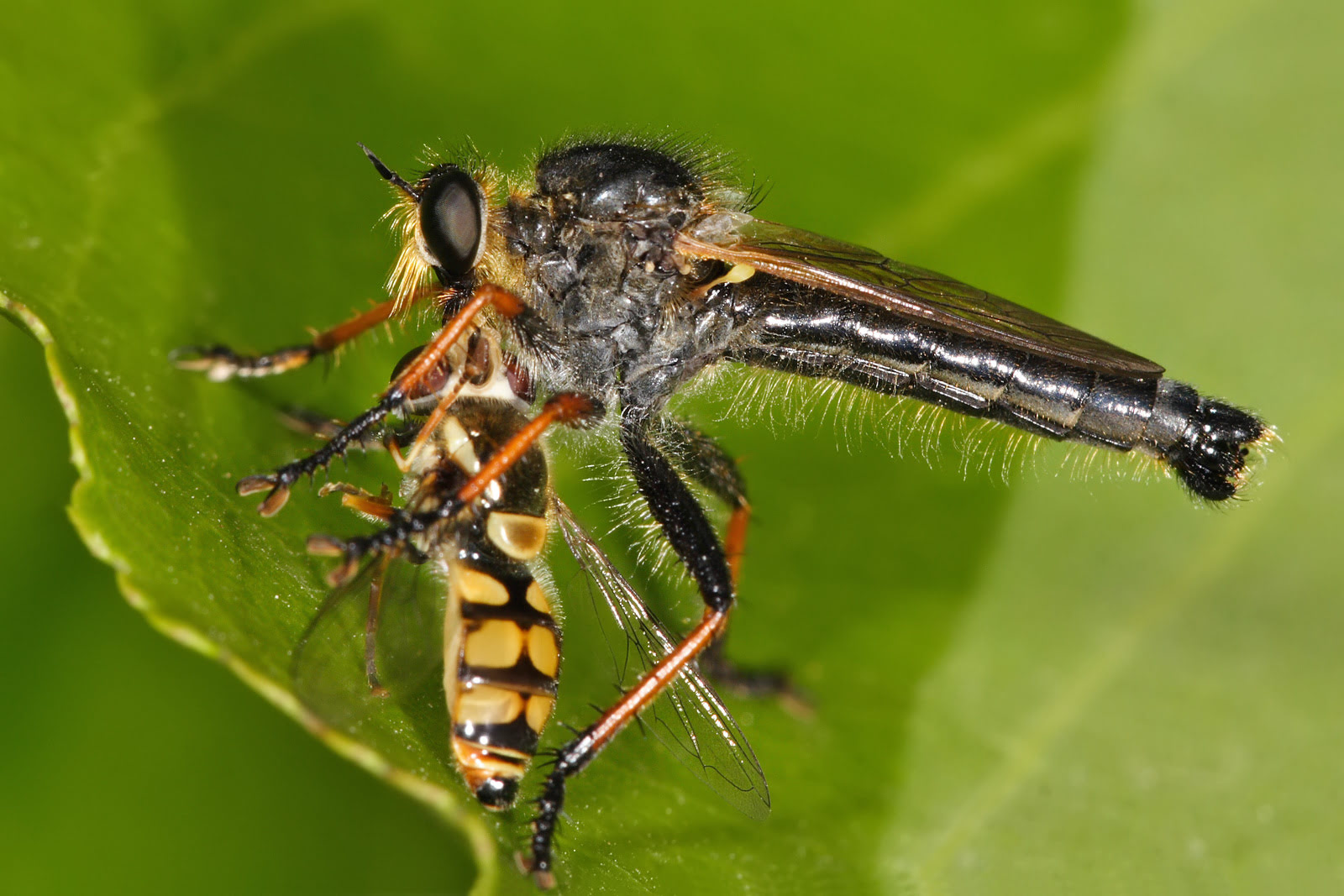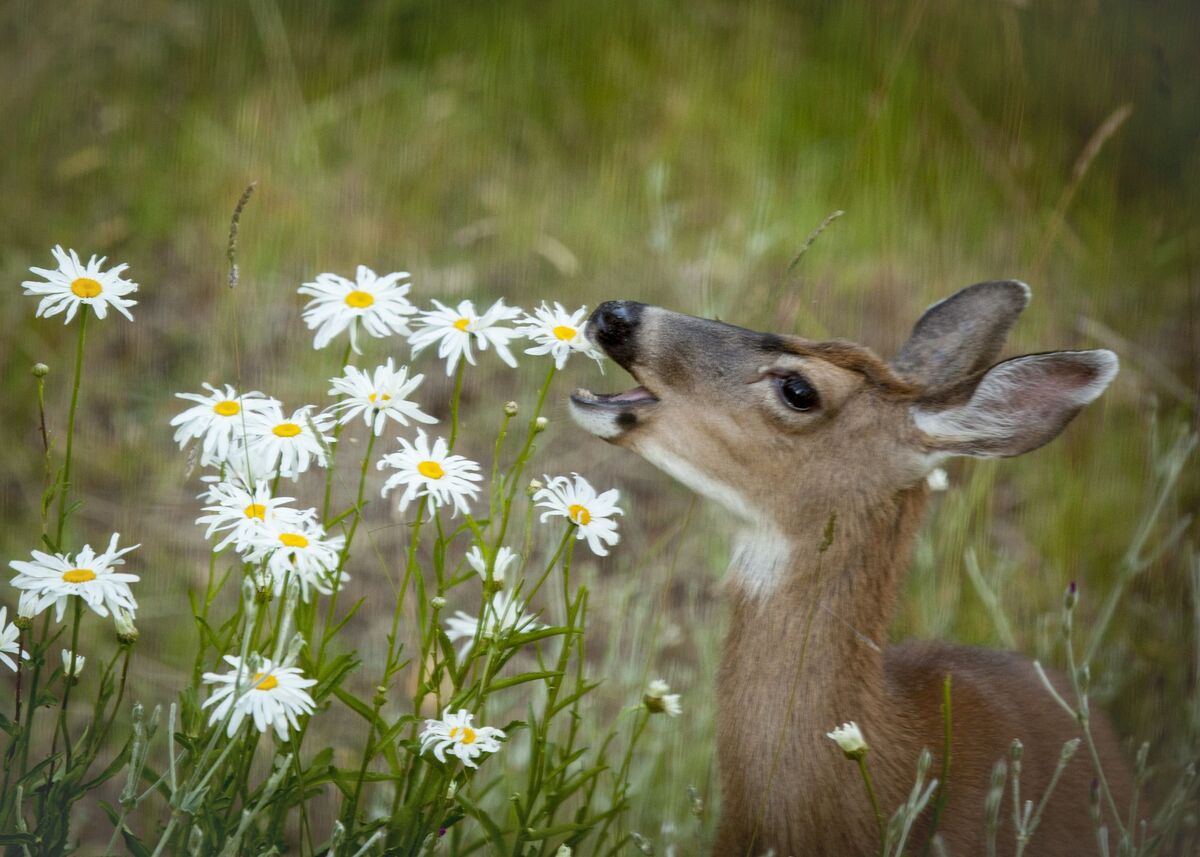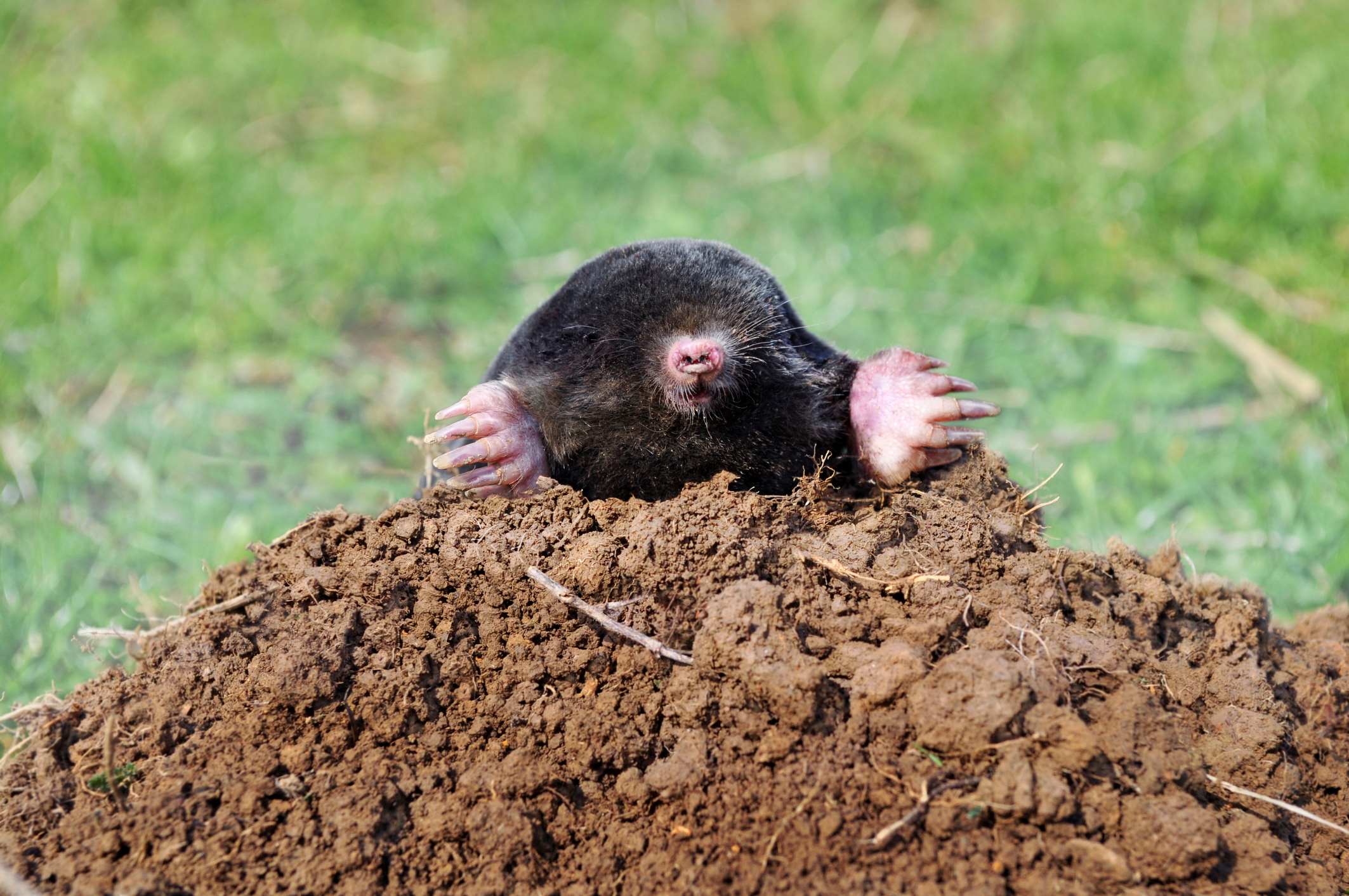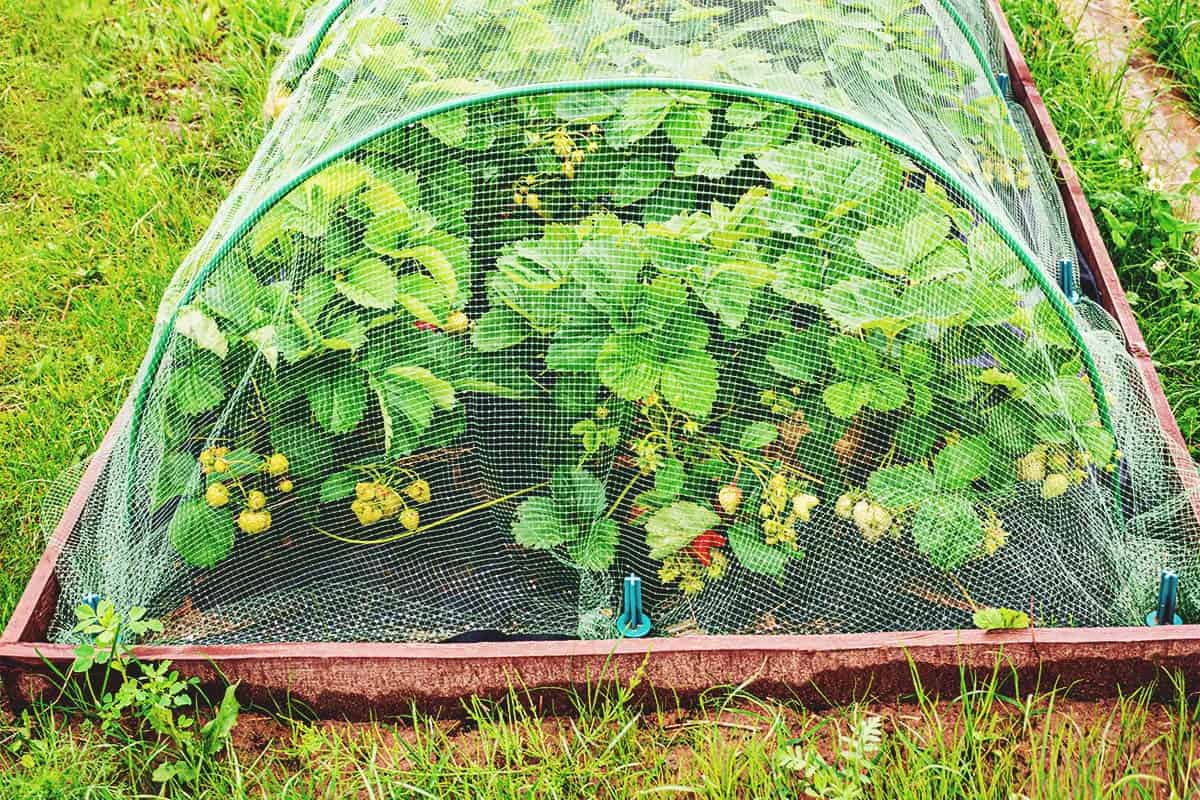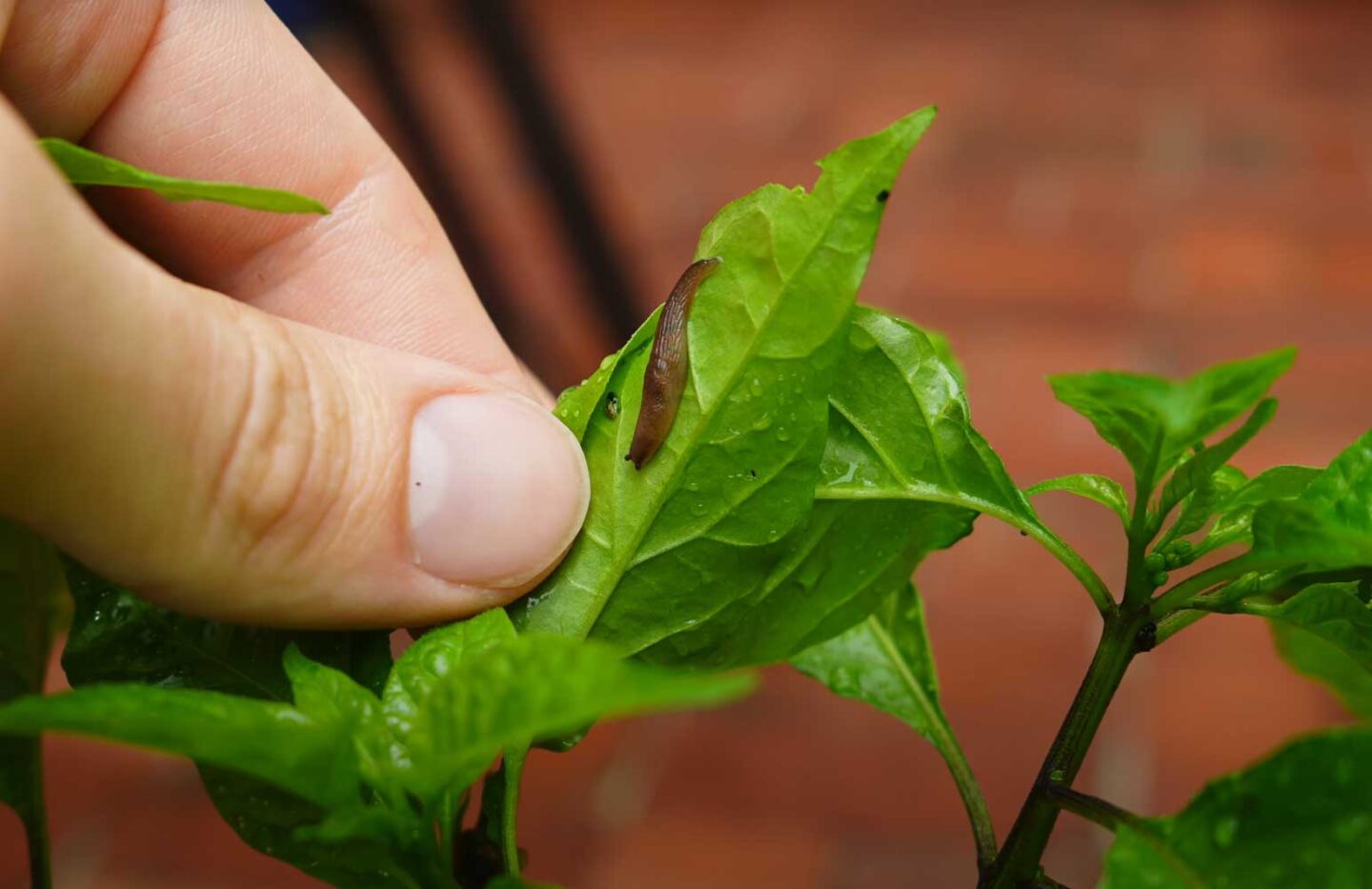Home>Gardening News and Trends>Latest News>What Animals Eat Shrubs
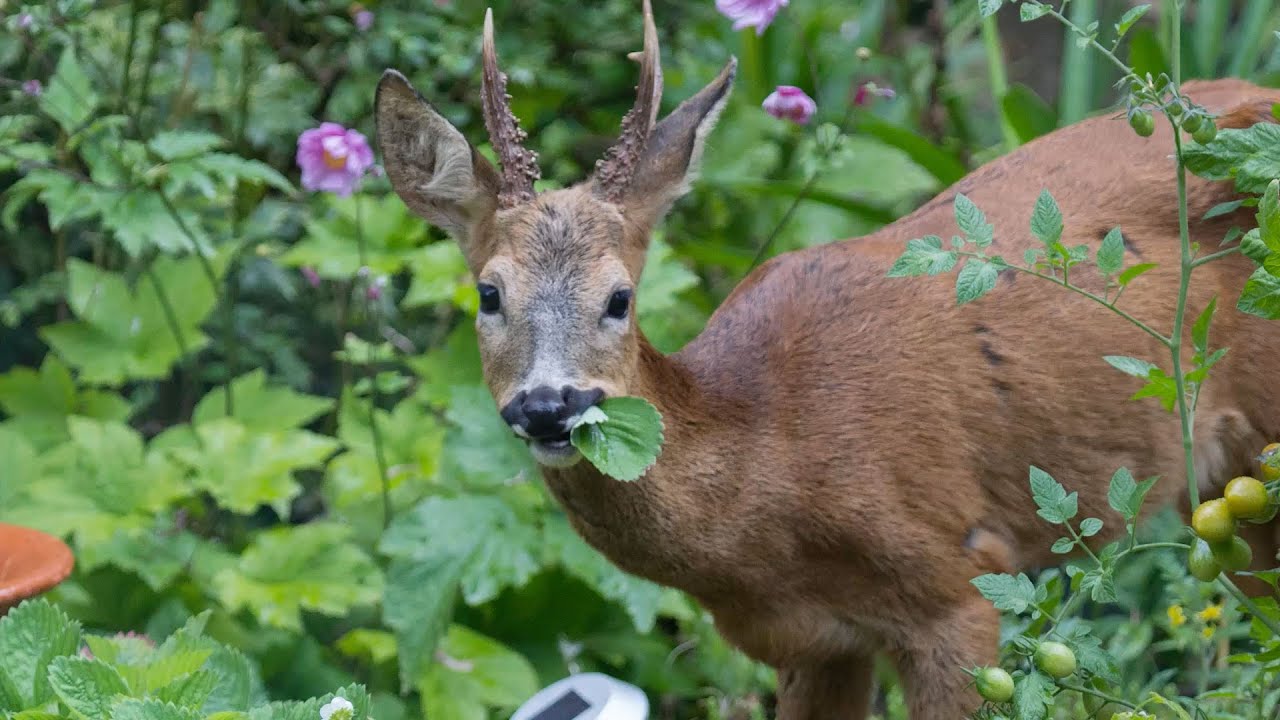

Latest News
What Animals Eat Shrubs
Published: October 19, 2023
Discover the latest news on what animals eat shrubs. Explore the fascinating insights into the dietary habits of wildlife and their dependence on shrub vegetation.
(Many of the links in this article redirect to a specific reviewed product. Your purchase of these products through affiliate links helps to generate commission for Chicagolandgardening.com, at no extra cost. Learn more)
Table of Contents
- Introduction
- Importance of Shrubs in Animal Diets
- Herbivores that Consume Shrubs
- Carnivores that Feed on Animals that Eat Shrubs
- Omnivores and their Consumption of Shrubs
- Competition for Shrubs among Different Animals
- Ecological Impacts of Animal Consumption on Shrubs
- Conservation Efforts to Support Shrubs in Animal Diets
- Conclusion
Introduction
Shrubs, often overlooked in favor of towering trees or vibrant flowers, play a vital role in supporting various animal species. These hardy and versatile plants provide an essential food source for many herbivores, carnivores, and omnivores in diverse ecosystems around the world. While they may not grab headlines like apex predators or migratory birds, the role of shrubs in animal diets cannot be underestimated.
Shrubs are woody plants that are smaller than trees but larger than herbaceous plants. They are characterized by their multiple stems and dense foliage, which make them an attractive choice for animals seeking shelter, nesting sites, and, of course, food. The nutrient-rich leaves, fruits, and shoots of these plants serve as a valuable source of sustenance for a wide range of animals.
Whether it’s a deer browsing on the tender shoots of a shrub in a forest, a bear feasting on the berries of a shrub in a meadow, or a bird building its nest in the protective thicket of a shrub, these plants are a lifeline for countless creatures. In this article, we will explore the significance of shrubs in animal diets and delve into the various types of animals that consume shrubs in different ways.
From the large herbivores that graze on shrubs to the carnivores that hunt animals that rely on shrubs for sustenance, we will uncover the intricate relationships between these plants and their animal consumers. Additionally, we will examine the ecological impacts of animal consumption on shrubs and highlight the conservation efforts aimed at supporting the role of shrubs in animal diets.
By understanding the importance of shrubs in animal diets, we can gain a deeper appreciation for these often-underappreciated plants and work towards their conservation. So, let’s journey into the world of animal consumption of shrubs and uncover the fascinating interplay between flora and fauna.
Importance of Shrubs in Animal Diets
Shrubs serve as a crucial component of animal diets, providing a range of nutritional benefits and fulfilling various ecological roles. These plants offer a diverse array of foliage, shoots, fruits, and seeds that contribute to the overall health and survival of numerous animal species.
For herbivores, shrubs are a reliable source of sustenance. The leaves and shoots of shrubs are packed with essential nutrients, including carbohydrates, proteins, and minerals. Grazing animals such as deer, goats, and rabbits rely on shrubs to meet their dietary needs, especially during periods when other food sources may be scarce.
Shrubs are particularly important in arid and semi-arid regions where access to water and edible vegetation can be limited. Desert-dwelling animals like camels and dik-diks have adapted to survive in these harsh environments by relying on shrubs for hydration and nourishment.
Moreover, shrubs often have unique chemical compounds that can serve as natural medicines or deterrents against parasites and pathogens. Certain shrub species produce secondary metabolites, such as tannins and essential oils, that are beneficial for animal health. These compounds have antimicrobial and antiparasitic properties, helping herbivores maintain optimal health and ward off diseases.
But it’s not just herbivores that benefit from shrubs. Carnivores also play a role in the consumption of shrubs indirectly. Many carnivorous animals feed on herbivores that rely heavily on shrubs for their diet. For example, a predator like a lion may not directly consume shrubs but feeds on herbivores like zebra or wildebeest that heavily rely on shrubs for their sustenance.
Shrubs also play a critical role in supporting omnivorous species. Animals with flexible diets, such as bears and raccoons, consume a combination of plant matter, including shrubs, alongside their meat-based diet. The fruits, nuts, and berries produced by shrubs offer a valuable energy source for these omnivores, helping them meet their nutritional requirements.
Furthermore, shrubs provide shelter and nesting sites for a wide range of animal species. The dense foliage and intricate branching structure of shrubs create a protective habitat for birds, small mammals, and insects. These animals often rely on shrubs as a safe haven from predators or as a place to build their nests and raise their young.
Overall, shrubs play a crucial role in maintaining the ecological balance within ecosystems. By providing sustenance, protection, and nesting opportunities for a diverse array of animals, these plants contribute to the overall health and stability of animal populations.
Now that we have established the importance of shrubs in animal diets, let’s explore the specific types of animals that rely on shrubs and the different ways in which they consume them.
Herbivores that Consume Shrubs
A wide range of herbivorous animals rely on shrubs as a key component of their diet. These animals have evolved specialized feeding adaptations to consume the leaves, shoots, and foliage of various shrub species.
One such example is the iconic giraffe, known for its long neck and ability to feed on high branches. While giraffes primarily consume leaves from tall trees, they also browse on shrubs when available. The flexibility of their long necks allows them to reach shrub foliage that is inaccessible to other herbivores.
Deer species, such as whitetail deer and mule deer, are also avid consumers of shrubs. These animals are known as browsers, as they feed on a variety of shrub species by selectively nibbling on leaves, twigs, and shoots. Shrubs provide a vital food source for deer, especially during the winter when other green vegetation may be scarce.
In grassland ecosystems, where shrubs are abundant, animals like pronghorns and bison also graze on shrubs. Grazers have specialized teeth for cropping grasses and shrubs close to the ground. Pronghorns, for instance, make use of their sharp incisors and rough tongues to strip leaves and shoots from shrubs.
Small herbivores, including rabbits, hares, and rodents, also consume shrubs as a significant part of their diet. These animals possess sharp incisors that help them gnaw through tough shrub stems and twigs. By including shrubs in their diet, these animals obtain essential nutrients and maintain population balance within their respective ecosystems.
Additionally, in harsh desert environments, herbivores like camels and desert gazelles have adapted to survive on shrubs that can endure arid conditions. These animals have specialized digestive systems that allow them to extract moisture from shrubs and efficiently process the tough, fibrous plant material.
Herbivores that consume shrubs play an important ecological role in maintaining the health and balance of ecosystems. Through their feeding habits, they help control shrub growth and shape the overall vegetation structure of an area. Additionally, their selective browsing can influence the composition of shrub species, promoting biodiversity and ecological resilience.
The intricate relationship between herbivores and shrubs demonstrates the interdependence within ecosystems. As herbivores rely on shrubs for food, shrubs rely on herbivores for dispersal of their seeds. Some shrub species have evolved to produce fruits or seeds that are specifically adapted for consumption and dispersal by herbivores.
The intricate dance between herbivores and shrubs is a testament to the interconnectedness of the natural world. By understanding the feeding habits and role of herbivores in shrub consumption, we can gain a deeper appreciation for the delicate balance that exists within ecosystems.
Next, we will explore the carnivores that feed on animals that consume shrubs, further highlighting the interconnected web of life in which shrubs play a vital role.
Carnivores that Feed on Animals that Eat Shrubs
While carnivorous animals may not directly consume shrubs, they often rely on animals that feed on shrubs as a significant part of their diet. These carnivores play a crucial role in maintaining the balance of ecosystems by controlling the population of herbivores and indirectly influencing shrub consumption.
One prime example of this relationship can be seen in the African savanna, where lions, leopards, and cheetahs prey on herbivores such as zebras, wildebeests, and impalas. These herbivores heavily rely on shrubs as a food source, feeding on their leaves, shoots, and fruits.
By regulating the population of herbivores, carnivores indirectly impact the consumption of shrubs. Without the presence of carnivores, herbivores can overgraze and deplete shrubs, leading to a negative shift in the ecosystem dynamics.
In North America, the relationship between carnivores and shrub-consuming animals is also evident. Wolves, for example, prey on elk, moose, and deer that consume shrubs as part of their diet. By preying on these herbivores, wolves help maintain a healthy balance between shrub consumption and population control.
But it’s not just large carnivores that play a role in shaping shrub consumption. Small carnivores like foxes and coyotes also have an impact. These predator species target small mammals and rodents that consume shrubs, indirectly influencing the browsing patterns and distribution of shrub vegetation.
This interconnected relationship between carnivores, herbivores, and shrubs is a reminder of the intricate food web that exists in ecosystems worldwide. The cascading effects of carnivores preying on herbivores that rely on shrubs highlight the interdependence among different species and their role in maintaining ecosystem health.
Furthermore, the presence of carnivores helps prevent herbivores from overexploiting shrubs. This allows shrubs to thrive and maintain their essential functions within an ecosystem, such as providing food and shelter to other animals.
Conservation efforts that focus on protecting and restoring carnivore populations have far-reaching implications for the health and sustainability of shrub-dominated ecosystems. By recognizing the role of carnivores as top predators and their importance in regulating herbivore populations, we can better understand the delicate balance needed for shrubs to flourish.
Next, we will explore the consumption of shrubs by omnivores and their unique relationships with these versatile plants.
Omnivores and their Consumption of Shrubs
Omnivores, by their very nature, have a diverse diet that includes both plant and animal matter. As such, they also play a role in the consumption of shrubs, incorporating these versatile plants into their nutritional needs.
Bears are a prime example of omnivorous animals that consume shrubs as part of their diet. Species such as black bears and grizzly bears are known to forage on a wide variety of plant matter, including the foliage, shoots, and berries of shrubs. Shrubs provide bears with a valuable energy source, particularly during the summer when berries are abundant and help them gain necessary fat reserves for hibernation.
Raccoons are another notable example of omnivores that feed on shrubs. These clever animals are known for their adaptable diet, which includes fruits, nuts, insects, small animals, and, of course, shrubs. They are especially fond of berry-producing shrubs and use their nimble paws and dexterous fingers to pluck the fruits from the shrub branches.
Primates, such as chimpanzees and orangutans, also fall under the category of omnivores. While they primarily consume a variety of fruits, leaves, and insects, they have been observed consuming shrubs as well. Leaves from certain shrub species are incorporated into their diet, providing additional fiber and nutrients.
The consumption of shrubs by omnivores is not limited to these examples. Many other species, from wild boars to certain bird species, incorporate shrubs into their diet depending on their habitats and availability of food sources.
What sets omnivores apart from herbivores and carnivores is their ability to adapt to different food sources, including shrubs. These versatile animals can switch between consuming animal matter and plant material depending on the seasons, environmental conditions, and the availability of food resources. This flexibility allows them to survive and thrive in a wide range of ecosystems.
By including shrubs in their diet, omnivores contribute to seed dispersal, pollen transfer, and the overall health of shrub populations. As they forage on shrubs, they inadvertently aid in the reproduction and distribution of these plants, facilitating their growth and genetic diversity.
The relationship between omnivores and shrubs is a fascinating example of the complex interplay between different organisms within ecosystems. By consuming shrubs, omnivores contribute to the ecological balance, nutrient cycling, and sustainability of the plant and animal communities they interact with.
Now that we have explored the roles of herbivores, carnivores, and omnivores in the consumption of shrubs, let’s delve into the competition that arises among different animal species for these valuable food sources.
Competition for Shrubs among Different Animals
Shrubs are a limited resource in many ecosystems, and their importance as a food source attracts strong competition among various animal species. Different animals, including herbivores, carnivores, and omnivores, must navigate this competitive landscape to meet their dietary needs.
Within herbivore populations, competition for shrubs arises due to limited availability and nutritional requirements. Large herbivores may outcompete smaller ones for access to shrubs, as they can reach higher branches or strip foliage more effectively. In areas where shrubs are scarce, herbivores may need to range further in search of suitable food sources, leading to increased competition and potential conflicts.
Moreover, different species of herbivores may have preferences for specific shrub species. Some species may be specialized in feeding on certain types of shrubs, leading to competition within the same habitat. When preferred shrub species become scarce, herbivores may switch to alternative species or migrate to other areas in search of food.
Carnivores also compete indirectly for shrubs through their prey. As carnivores prey on herbivores that consume shrubs, competition among carnivores can arise when there is limited availability of prey animals. This can result in territorial disputes and conflicts over hunting areas, leading to a complex web of competition within the carnivore community.
Additionally, omnivores must contend with competition from other omnivorous species and herbivores for access to shrubs. The availability of shrub resources can impact the distribution and abundance of omnivores in an ecosystem. In times of scarcity, omnivores may need to adjust their diet to include more animal matter or seek alternative food sources to compensate for the limited availability of shrubs.
This competition for shrubs can have cascading effects on the abundance and distribution of animal populations within an ecosystem. It can shape the behavior and foraging strategies of different species, leading to adaptations and niche differentiation to avoid direct competition.
While competition for shrubs among different animal species exists, it is important to note that this competition is necessary for maintaining a balanced ecosystem. It drives natural selection, promotes evolutionary adaptations, and ensures the efficient use of limited resources.
Understanding the dynamics of competition for shrubs among different animals is crucial for conservation efforts. It allows us to identify key species that are particularly reliant on shrubs and helps guide management strategies to ensure their survival. By conserving shrub habitats and promoting biodiversity, we can maintain a healthy balance among different animal species and support the essential role of shrubs in the ecosystem.
Next, we will explore the ecological impacts of animal consumption on shrubs and the conservation efforts aimed at supporting their role in animal diets.
Ecological Impacts of Animal Consumption on Shrubs
The consumption of shrubs by animals has significant ecological impacts on both the plants themselves and the surrounding ecosystem. As animals feed on shrubs, they can influence the growth, distribution, and diversity of shrub populations, leading to cascading effects throughout the ecosystem.
One of the primary ecological impacts of animal consumption on shrubs is the shaping of vegetation structure. Grazing herbivores, for example, selectively browse on the leaves and shoots of shrubs, affecting their growth patterns. This browsing behavior can result in shrubs developing a dense and bushy structure or stimulating new growth in response to herbivory.
The consumption of shrubs by animals can also affect shrub reproduction. Some shrub species rely on animals to disperse their seeds. As animals consume the fruits or berries of shrubs, they inadvertently aid in seed dispersal. The seeds are then dispersed in different parts of the ecosystem, increasing the potential for shrub colonization and genetic diversity.
However, excessive herbivory can have negative impacts on shrub populations. Overgrazing by herbivores can deplete shrubs, leading to a decline in their abundance and vigor. This not only affects the shrubs themselves but also impacts other animals that depend on them for food, shelter, or nesting sites.
The ecological impacts of animal consumption extend beyond the immediate effects on shrub populations. They can also influence the availability of resources for other organisms in the ecosystem. For example, when herbivores consume shrubs, it can create openings in the vegetation, allowing for the growth of understory plants or promoting the establishment of new plant species.
The activities of animals that consume shrubs can also create microhabitats within the ecosystem. As animals graze or browse on shrubs, they can alter the structure of the vegetation, creating diverse habitats for other plants, insects, and small animals. Dead shrub material can provide nesting sites for birds or shelter for small mammals.
Furthermore, the consumption of shrubs by animals influences nutrient cycling within the ecosystem. As animals consume and digest shrub material, the nutrients contained within are incorporated into their bodies. Through excretion and decomposition, these nutrients are then returned to the soil, enriching it and promoting plant growth.
Understanding the ecological impacts of animal consumption on shrubs is crucial for managing and conserving ecosystems. Conservation efforts should strive to strike a balance between protecting shrub populations and maintaining healthy animal populations. This can involve implementing strategies such as habitat management, controlling herbivore populations through natural means, and promoting ecological diversity to support the interconnected relationships between shrubs and animals.
By recognizing the intricate interactions between shrubs and animals, we can appreciate the important role that shrubs play in providing food, shelter, and ecological balance within ecosystems.
In the next section, we will explore the conservation efforts aimed at supporting shrubs in animal diets and ensuring their long-term survival.
Conservation Efforts to Support Shrubs in Animal Diets
Recognizing the importance of shrubs in animal diets and their ecological significance, conservation efforts are underway to support the survival and sustainability of shrub populations. These efforts aim to protect the habitat, manage herbivore populations, and promote biodiversity to ensure the continued availability of shrubs as a valuable food source for animals.
One key aspect of shrub conservation is the protection and restoration of shrub habitats. This involves preserving areas where shrub communities thrive, preventing habitat destruction, and promoting the reestablishment of shrubs in areas where they have been lost due to human activities or natural disturbances. By creating protected areas and implementing habitat conservation plans, we can safeguard the crucial habitats that support shrubs and the animals that rely on them.
Managing herbivore populations is another crucial conservation strategy to support shrubs in animal diets. By carefully monitoring and regulating herbivore populations, conservationists can prevent overgrazing and ensure that the consumption of shrubs is sustainable. This may involve implementing controlled hunting programs, using natural predators to control herbivore populations, or restoring the presence of key herbivores in certain ecosystems.
Restoration efforts can also play a significant role in supporting shrubs in animal diets. Restoration projects aim to reestablish shrub communities in areas where they have been degraded or lost. This can involve replanting native shrub species, reintroducing key herbivores or dispersers, and implementing habitat restoration techniques to create suitable conditions for shrub growth and survival.
Conservation efforts to support shrubs in animal diets also focus on promoting biodiversity within ecosystems. Maintaining a diverse array of plant species, including different shrub species, is crucial for providing a variety of food sources for animals. Protecting and restoring shrub diversity not only benefits the plants themselves but also ensures a resilient and healthy ecosystem for a wide range of animal species.
Education and outreach programs are essential in raising awareness about the importance of shrubs in animal diets and the need for their conservation. These programs engage the public, landowners, and policymakers, fostering an understanding of the role of shrubs in ecosystems and their connection to animal populations. By promoting awareness and appreciation, these efforts can garner support for conservation initiatives and drive positive action towards protecting shrub communities.
Overall, conserving shrubs in animal diets is vital for maintaining the health and balance of ecosystems worldwide. By protecting shrub habitats, managing herbivore populations, restoring shrub communities, promoting biodiversity, and fostering awareness, we can ensure the continued availability of shrubs as a valuable resource for animals.
Through our collective efforts, we can help sustain the intricate web of relationships between shrubs and animals, supporting the biodiversity and resilience of ecosystems for generations to come.
Conclusion
Shrubs, often overlooked in the grand scheme of ecosystems, are vital players in supporting a wide range of animal species. From herbivores that rely on shrubs as a primary food source to carnivores that prey on animals that consume shrubs, and omnivores that incorporate shrubs into their versatile diets, these plants have a significant impact on the diets and survival of various animals.
The importance of shrubs in animal diets cannot be overstated. Shrubs provide essential nutrients, shelter, and nesting sites for a diverse array of species, contributing to the overall health and balance of ecosystems. From the browsing of herbivores to the indirect effects of carnivores and the adaptability of omnivores, the consumption of shrubs influences the structure and composition of plant communities, as well as the dynamics of animal populations.
Understanding the ecological impacts of animal consumption on shrubs is essential for conservation efforts. Conservationists focus on protecting shrub habitats, managing herbivore populations, promoting biodiversity, and restoring shrub communities. These efforts aim to support the long-term survival of shrubs, ensuring their availability as a valuable resource for animals in the face of human activities and environmental challenges.
As we continue to explore and appreciate the interconnectedness of shrubs and animals, it becomes evident that the delicate balance within ecosystems relies on the role of shrubs as a fundamental component of animal diets. By valuing and conserving shrubs, we not only promote the well-being of individual species but also contribute to the resilience and sustainability of entire ecosystems.
So as we venture into nature, let us not overlook the significance of shrubs. They may not tower over us like mighty trees or dazzle us with vibrant blooms, but their role in supporting animal diets is an essential part of the intricate web of life. By nurturing and protecting shrub communities, we can ensure a harmonious coexistence with the diverse array of animals that rely on these resilient and versatile plants.

